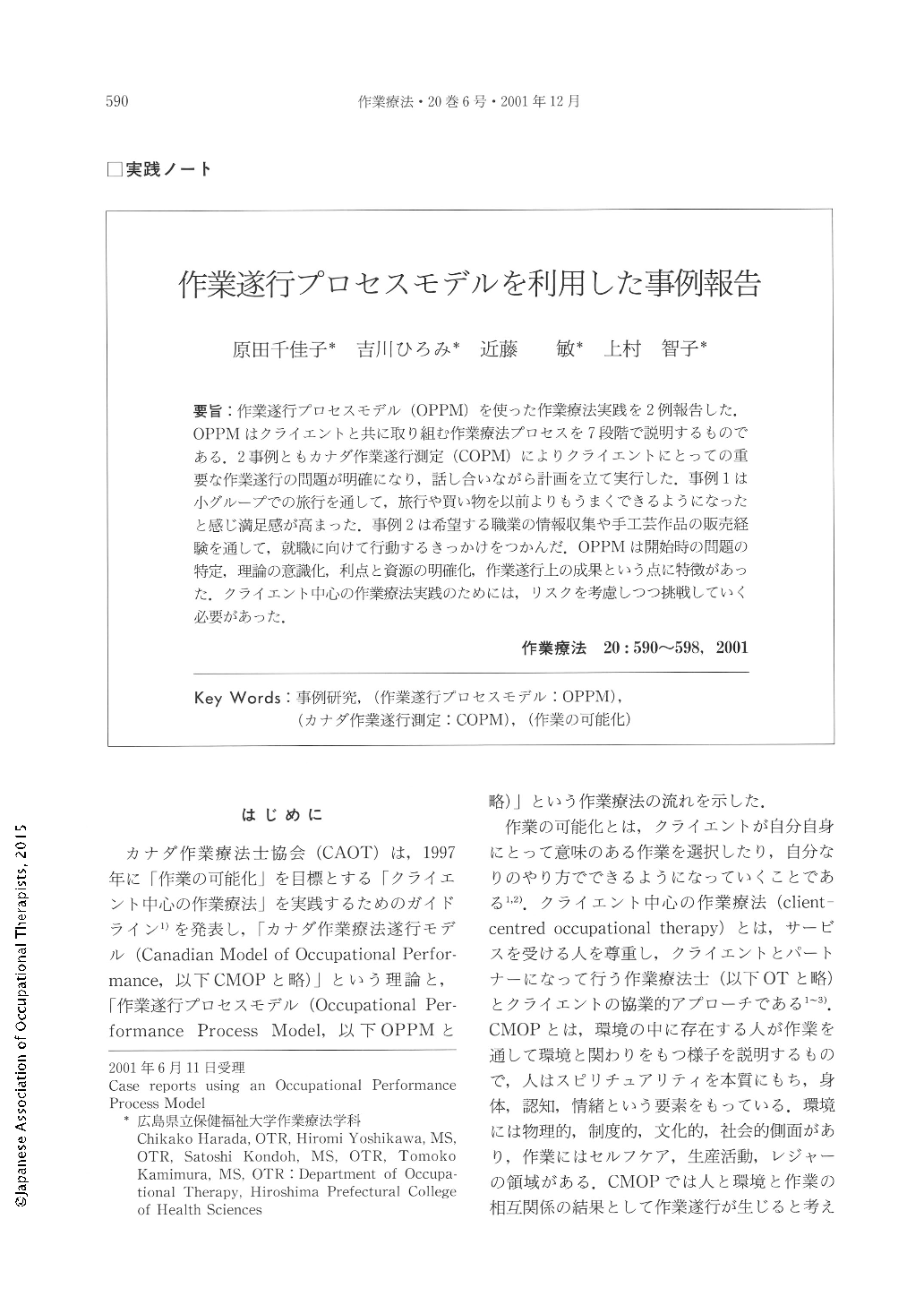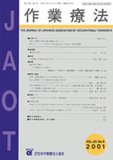Japanese
English
- 販売していません
- Abstract 文献概要
- 1ページ目 Look Inside
- 参考文献 Reference
- サイト内被引用 Cited by
要旨:作業遂行プロセスモデル(OPPM)を使った作業療法実践を2例報告した.OPPMはクライエントと共に取り組む作業療法プロセスを7段階で説明するものである.2事例ともカナダ作業遂行測定(COPM)によりクライエントにとっての重要な作業遂行の問題が明確になり,話し合いながら計画を立て実行した.事例1は小グループでの旅行を通して,旅行や買い物を以前よりもうまくできるようになったと感じ満足感が高まった.事例2は希望する職業の情報収集や手工芸作品の販売経験を通して,就職に向けて行動するきっかけをつかんだ.OPPMは開始時の問題の特定,理論の意識化,利点と資源の明確化,作業遂行上の成果という点に特徴があった.クライエント中心の作業療法実践のためには,リスクを考慮しつつ挑戦していく必要があった.
Two cases are presented according to the Occupational Performance Process Model (OPPM). OPPM is described in 7 stages of an occupational therapy process working with clients. The Canadian Occupational Performance Measure (COPM) was useful in identifying important issues in occupational performance for clients. The clients and an occupational therapist were working on the planning and implementation of occupational therapy. Case 1 was improved in her perception of performance and satisfaction when taking a trip and shopping through the experience of a short trip with a small group. Case 2 was able to start finding a job through the experience of gathering information about a job, what she wants to do, and selling crafts she made. The OPPM is featured by identification of issues at the initial stage, awareness of theory, identification of strengths and resources, and outcomes on occupational performance. It is necessary to take risks and present challenges for client-centred practice.

Copyright © 2001, Japanese Association of Occupational Therapists. All rights reserved.


